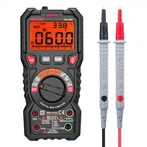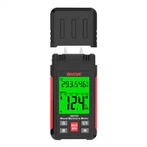Three Examples of Inverter Switching Power Supply Faults
Example:
The 2844 chip is powered on separately with 6 pins without pulses, and the voltage on pins 1, 2, and 3 is normal. The voltage of the four pins is 1.8V, and the oscilloscope measures no sawtooth pulse on the four pins; The former repairman replaced four chips in a row. Measure the resistance of pin 4 to ground, which is significantly lower, and the other circuits are tens of thousands of ohms. This machine is about 3000 ohms. Remove the chip and its peripheral components, with the 4 pins suspended, and measure the resistance to ground to 9 kiloohms, which is not infinite. Obviously, there is a leakage point between the 4-pin through-hole or copper foil and the 5-pin grounding point. At this point, between the four pins to ground, try adding a 30V DC voltage, and the displayed current value is tens of milliamperes and getting smaller. When it is as small as a few milliamperes, cut off the power and measure the resistance value of the four pins to ground again, becoming more than 60 kiloohms. Restore the chip and 4-pin components, and troubleshoot power on issues.
Two examples:
Difficulty in starting vibration. After the chip and main circuit are powered on together, the output of+15V is 11V and 24V is 19V when the power supply is working, both of which are low. The voltage stabilization sampling is+15V, which is clearly not at the voltage stabilization starting point. The oscilloscope measures the 6-pin pulse duty cycle, which is relatively small. Analyze the reason and find that the output pulse duty cycle is small, which is related to the status of pin 1 and pin 3. 1. Connect pins 2 to feedback optocoupler pins 3 and 4, and check that there is no problem with the voltage stabilizing circuit. There is an 18V voltage regulator diode connected between pins 3 and 7. After removal, the fault is resolved.
The low output voltage, if not due to insufficient self power supply, is the cause of voltage regulation or overcurrent. This example is the latter.
Three examples:
Switching power supply, chip power on and main circuit power on, working normally. After removing the chip power supply, it works normally. Check for no load short circuit and no temperature rise in the switch tube. The cause of insufficient self power supply can be ruled out. Even if the power on excitation ability is insufficient, there will be no change after reducing the starting resistance. It is still a power supply or excitation issue with pins 5 and 7. Obviously, there are internal circuits on pins 5 and 7 of the chip.
After replacing the chip, it works normally.






